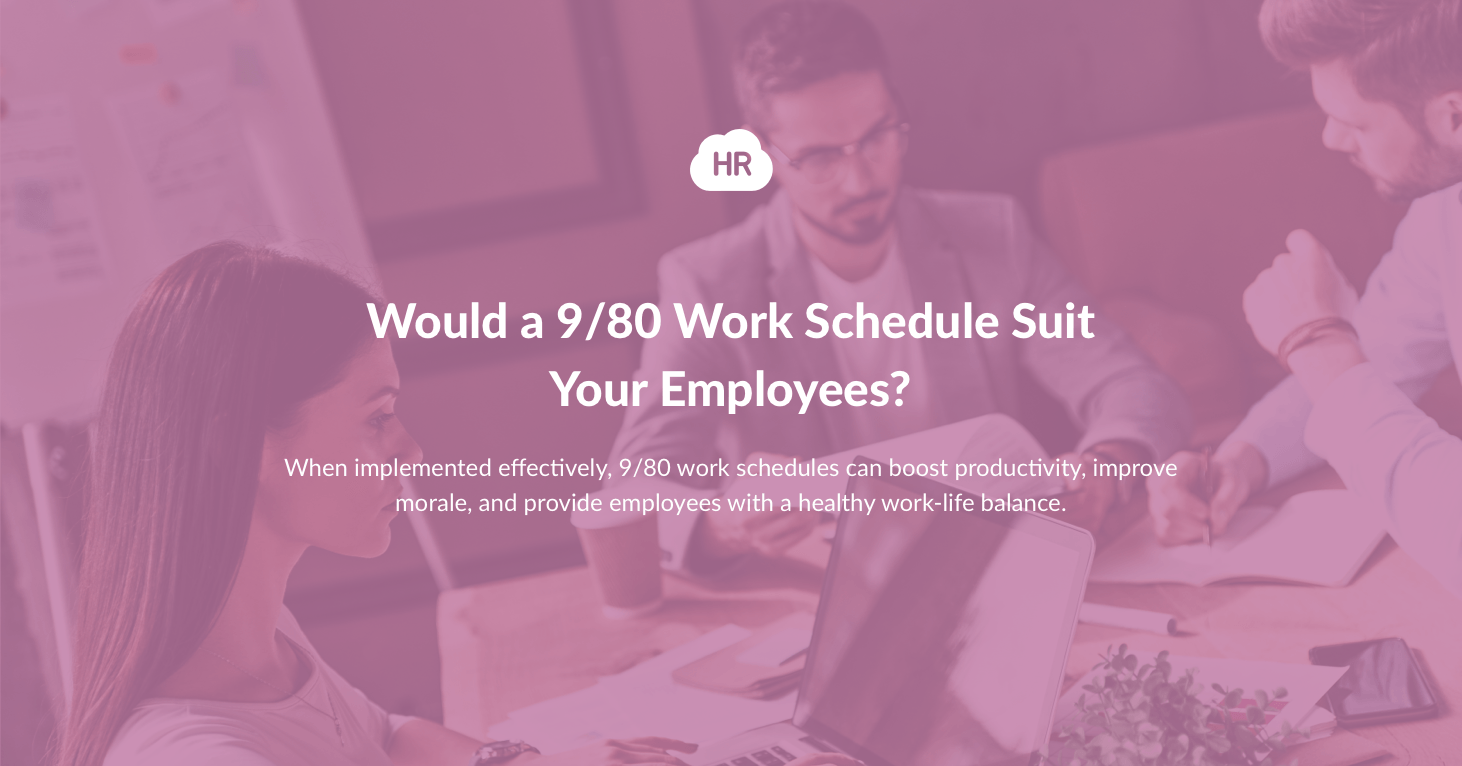

 Cut onboarding time
by 60%—here's the
Ultimate Checklist
that helped do it.
Cut onboarding time
by 60%—here's the
Ultimate Checklist
that helped do it.

More businesses than ever are embracing new models of working. In recent years, remote working has become the new normal for many industries, with a significant number of employees working from home. However, remote working requires a solid infrastructure to be viable for employers. Furthermore, it's not an option for many industry sectors.
If you're looking to ditch a typical 9-to-5 schedule and offer your employees a more flexible alternative, the 9/80 schedule is something to consider. This compressed work week involves long working hours, but there are guaranteed incentives in the form of additional days off twice a month.
When implemented effectively, 9/80 work schedules can boost productivity, improve morale, and provide employees with a healthy work-life balance. This alternative work arrangement is gaining popularity as a means to enhance workplace flexibility and employee satisfaction.
9/80 Work Schedule: How It Works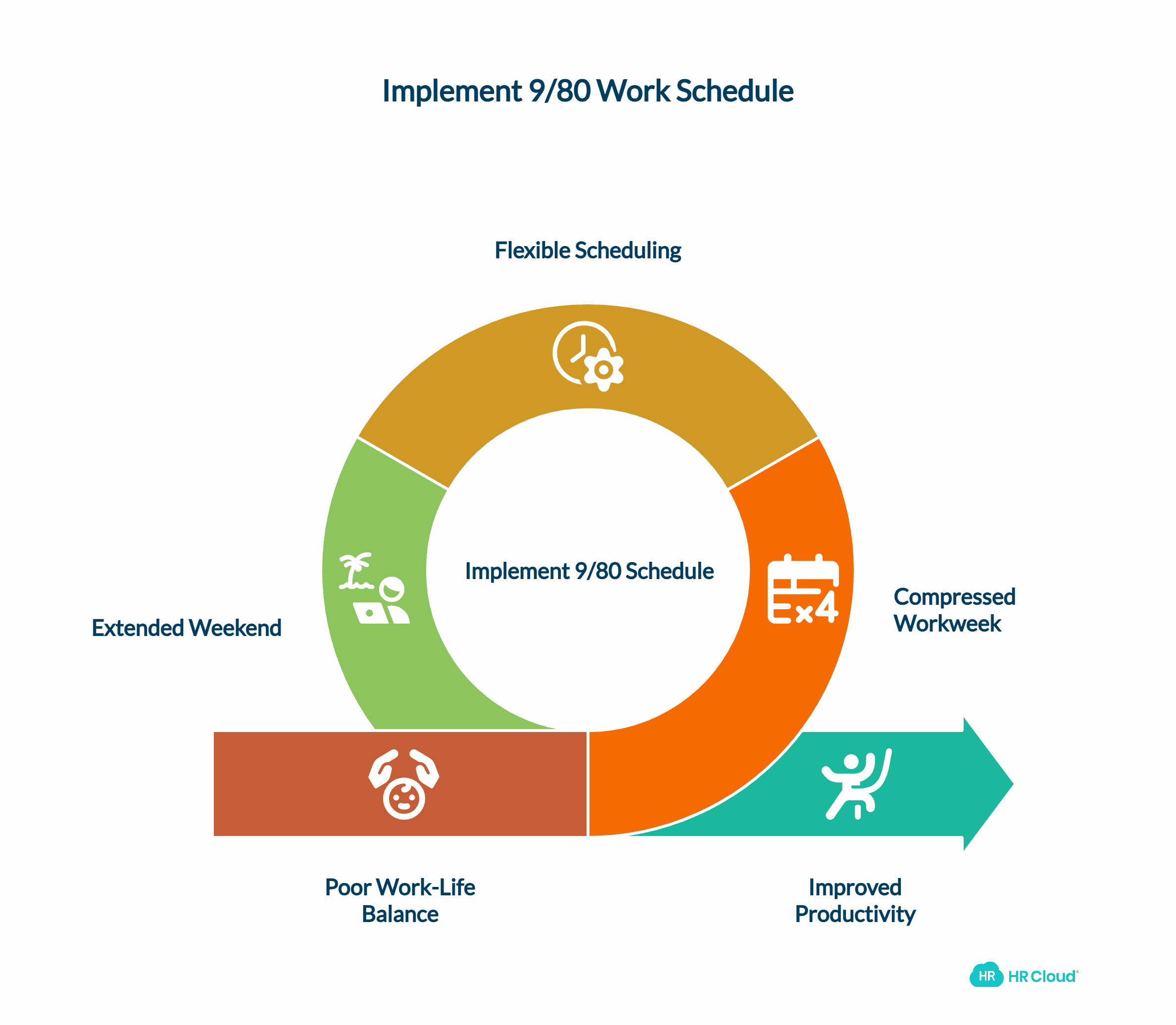
The main aim of a 9/80 work schedule is to improve productivity by encouraging a healthier work-life balance. Traditionally, employees are expected to put in 10 working days over two weeks. In the case of the 9/80 workweek, employees are instead expected to work just 9 days during the same period.
However, this compressed work schedule still demands 80 hours of input during the same two-week period. As such, employers are not sacrificing any costly man-hours. If you're looking to drive employee engagement by offering flexible work arrangements, the 9/80 schedule is well worth considering.
Because the 9/80 arrangement involves abandoning the conventions of the typical 9-to-5 model, employers need to be flexible when it comes to deploying it. The model involves a run of 9-hour shifts split across eight days, with a final 8-hour shift on the ninth day. This final shift is then followed by a Friday off, resulting in an extended weekend every other Friday. Instead of a day off, some employees may choose to work two 4-hour shifts rather than take the final Friday off.
During 9-hour days, employees are expected to work two 4-hour periods, with an hour-long lunch allowance breaking up the day. During 8-hour days, 30 minutes is usually allotted for lunch breaks. There's no steadfast rule on start and finish times, allowing employers to schedule work hours that best fit the needs of their business and accommodate employee preferences.
9/80 Work Schedule Benefits
Although some companies may be wary about experimenting with new work arrangements, the 9/80 schedule has several benefits. If you're keen to increase employee productivity, the 9/80 model is certainly worth exploring.
Because this compressed workweek provides employees with an average of two additional days off every month, there's a real incentive to work harder. The additional time away from work commitments also improves employee morale and well-being, making them more likely to return to their desks with renewed vigor and a brighter outlook.
With fewer days to work, employees are less likely to experience burnout and suffer stress-related illnesses, resulting in fewer absences and last-minute requests for paid time off. The 9/80 schedule is an obvious solution for companies looking to offer better work-life balance to their employees. With guaranteed extended weekends in place, employees can attend to domestic demands and social commitments without having to adjust office hours. It also makes lengthy commutes far more bearable and can potentially reduce commuting costs. This particular benefit means employers can think about casting the net wider when recruiting new talent, as the 9/80 workweek can be an attractive recruiting perk.
Although the main draw of the 9/80 schedule is the inclusion of an additional day off, employers can be flexible with it. During peak periods, it might make more sense for companies to stagger days off, rather than allowing every employee operating under the 9/80 model to take a Friday off.
Employers can also choose to eliminate the full day off approach entirely and instead offer two half-days during any given month, providing even more schedule flexibility.
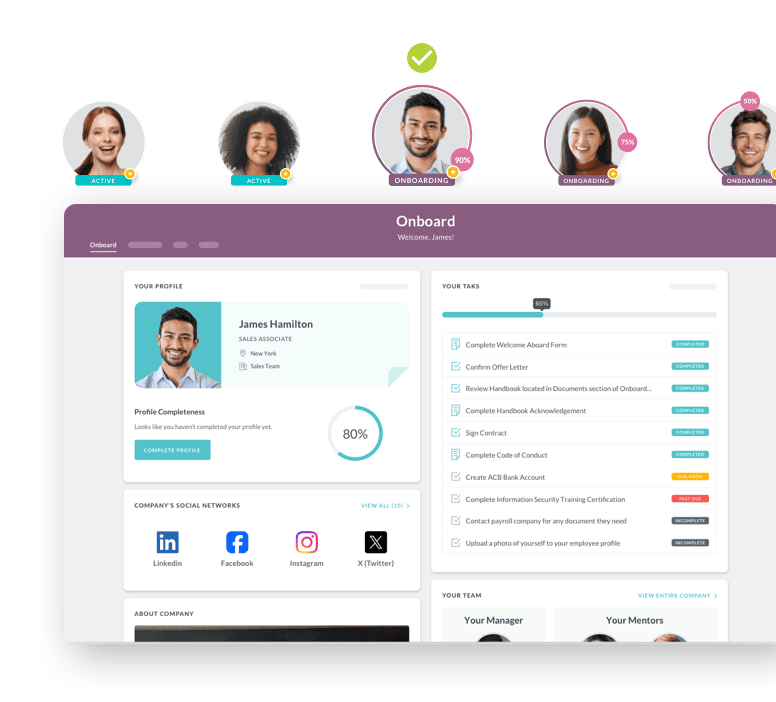
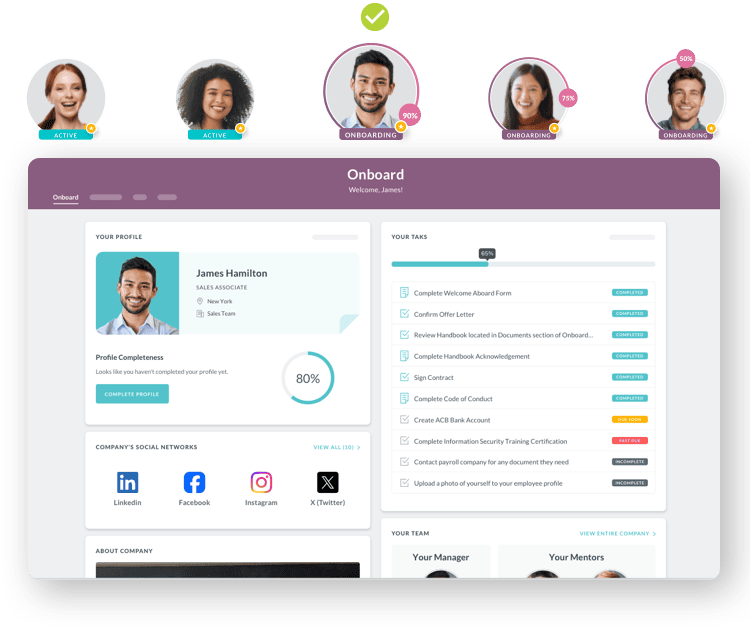
The Downsides of a 9/80 Schedule
The 9/80 work schedule has plenty of perks for employees and businesses alike. However, it's not an ideal fit for every industry sector. In certain industries, operational demands simply can't be supported by a workforce that has adopted a 9/80 approach.
Another drawback of the 9/80 schedule is the increased workdays it necessitates. Although the lure of a three-day weekend makes 9/80 working an attractive prospect, many employees may find a longer workday too tiring to maintain over longer periods. You should consider whether your business relies heavily on overtime hours.
If your teams are regularly working beyond contracted hours, this trend is unlikely to change after adopting a 9/80 model. Ultimately, if your workforce currently suffers from high instances of burnout and stress-related absences, there's a good chance that adopting the 9/80 model will exacerbate problems, rather than alleviate them.
While many companies have embraced the 9/80 schedule to boost productivity, there's also the chance it can have the opposite effect. Many employers who have introduced the 9/80 model have noted diminished levels of output during the final stretch of long shifts. Output during these final hours should be heavily monitored if you're thinking about trialing 9/80 models within your organization.
In many cases, productivity will return to previous levels after a period of adjustment. However, if productivity continues to flatline at less than desirable levels, you may want to abandon your plans of implementing 9/80 working as standard practice.
Additional Challenges Posed by 9/80 Working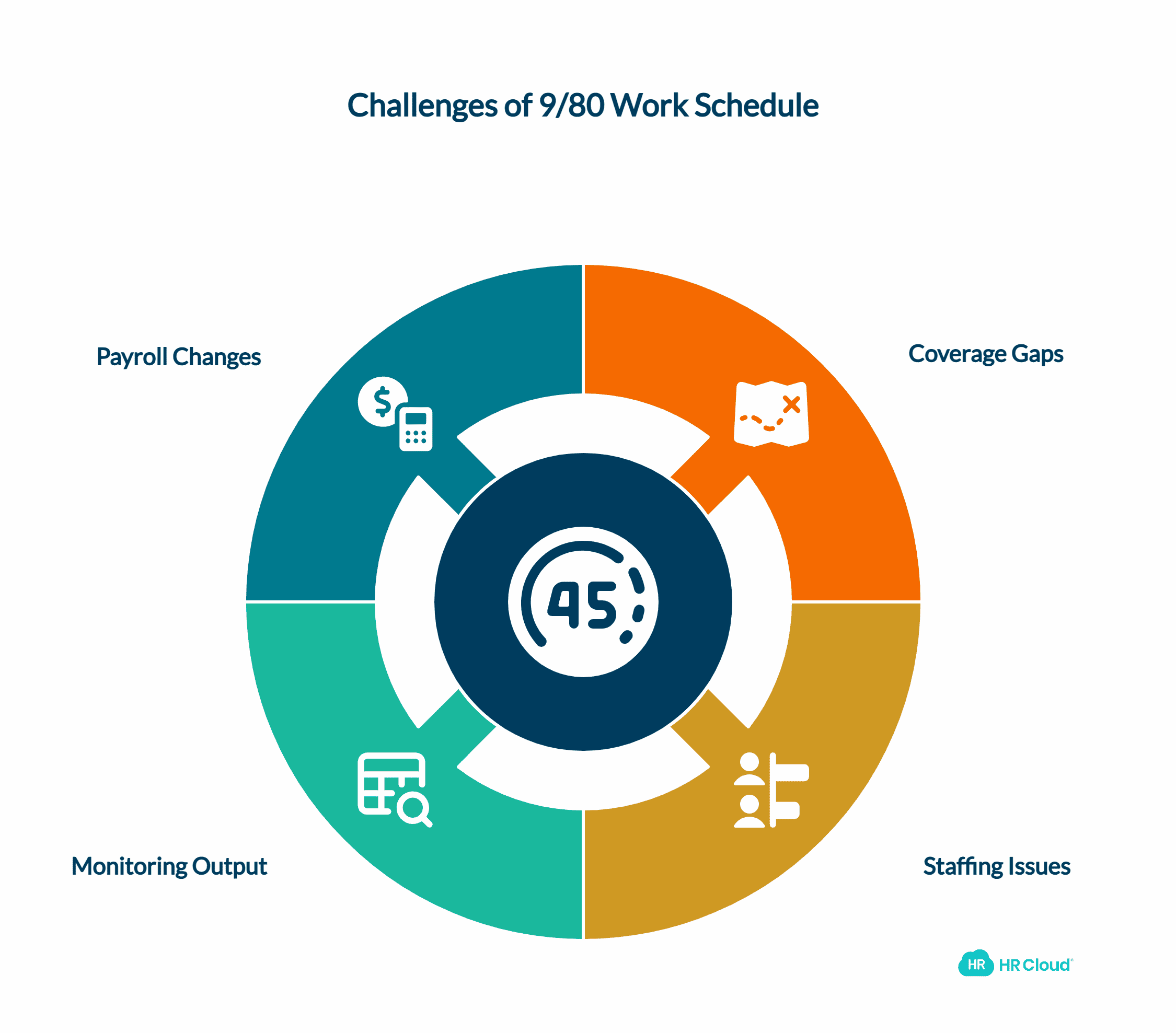
Smaller businesses may find adopting a 9/80 work schedule unfeasible. This is because 9/80 schedules tend to result in significant coverage gaps. Even at the best of times, smaller companies struggle with operational coverage.
If members of your team call in sick or are forced to take unexpected leave, the issue becomes even more significant. If your staffing levels are already stretched thin, now's not the time to think about introducing a 9/80 work schedule.
Even if your business is well prepared to accommodate 9/80 working, monitoring output and keeping track of hours can prove difficult. Payroll changes need to be considered, while new rules for sick days and PTO policy also need to be addressed. Implementing workforce management software and scheduling software can help with time tracking and shift scheduling, ensuring smooth operations under the new work arrangement.
Is a 9/80 Schedule Right For You?
Before you decide to implement a 9/80 work schedule, you'll need to think about the needs of your business. Furthermore, you'll need to take an honest look at your workforce and determine whether such a dynamic shift in working patterns is viable.
The 9/80 schedule isn't well-suited to smaller companies with modest workforces. It also requires considerable monitoring to determine effectiveness. HR policies may need to be updated, and the employee handbook should be revised to reflect the new work hour distribution and overtime regulations.
Ultimately, any company interested in implementing the 9/80 model should approach cautiously and consider a trial run before making it a standard business practice. It's essential to assess the impact on operational efficiency, employee experience, and overall job satisfaction before fully committing to this alternative workweek.
When implemented correctly, a 9/80 schedule can lead to improved employee retention, increased operational efficiency, and enhanced employee satisfaction. However, it's crucial to consider potential scheduling conflicts, coverage gaps, and the need for flexible scheduling to ensure the success of this compressed work schedule.
 Discover how our HR solutions streamline onboarding, boost employee engagement, and simplify HR management
Discover how our HR solutions streamline onboarding, boost employee engagement, and simplify HR management
Author Bio: Zoe Dromgoole is the Marketing Executive at Wood Flooring Ireland. Wood Flooring Ireland sell bespoke engineered wood flooring such as herringbone flooring. They don’t currently use the 9/80 work model, but do think that it is a fantastic schedule.
Keep Reading
Best HR Software for Universities: 2025 Guide for Higher-Ed HR Leaders
Higher education institutions face unique HR challenges—from managing adjunct faculty
Best HR Tools for Compliance Automation (and Why HR Cloud Leads the Pack)
Top 10 Healthcare HR Challenges That Right HR Platform Can Solve
Healthcare HR teams in 2025 face mounting pressure. A 2025 NSI survey found average
Like What You Hear?
We'd love to chat with you more about how HR Cloud® can support your business's HR needs. Book Your Free Demo

Build a Culture of Recognition. Boost Engagement. Guaranteed.
Workmates empowers employees to stay informed, connected, and appreciated—whether they’re on the front line, in the office, or remote. Recognition drives 12x higher engagement.Trusted by industry leaders in every sector




Cut Onboarding Costs by 60%.
Take the confusion and follow-ups out of onboarding with automated workflows, digital forms, and structured portals—so new hires ramp faster 3X quicker.Trusted by industry leaders in every sector




